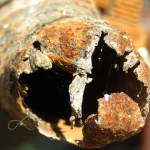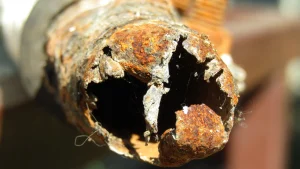
Singapore’s tropical climate provides an ideal breeding ground for mould. High humidity levels and frequent rainfall contribute to persistent moisture issues in both residential and commercial properties. Due to this, a mould specialist is a critical professional in property maintenance.
Discover the most common mould types found locally and what mould specialists focus on during a mould inspection.
5 Typical Mould Types in Singapore
1. Cladosporium
Cladosporium is one of the most frequently found moulds in local homes. It typically appears on wood, fabrics, and HVAC systems, showing up as black or green patches. Although it is not the most toxic mould, it is allergenic. Individuals may experience respiratory irritation, sinus congestion, and skin rashes upon prolonged exposure. During a mould inspection, specialists check for this mould particularly in air-conditioning vents, behind wallpapers, and along window frames. Its presence often indicates poor indoor ventilation or long-term moisture retention.
2. Aspergillus
Aspergillus is widespread in indoor and outdoor environments and has many different species, some of which can produce mycotoxins. This mould can pose a threat to individuals with weakened immune systems or underlying lung conditions. Local mould specialists often detect Aspergillus in areas with water damage or consistent dampness, such as bathrooms, kitchens, or poorly sealed basements. Since Aspergillus spores can stay airborne for extended periods, inspections typically involve air sampling alongside surface testing to assess exposure levels.
3. Penicillium
Penicillium grows quickly and thrives in water-damaged environments. It is often found on wallpaper, insulation, carpets, and water-damaged furniture. Its blue or green appearance makes it somewhat easier to spot, but it spreads through surfaces and air rapidly. Penicillium can trigger asthma symptoms, chronic sinus infections, and allergic reactions. A qualified mould specialist in Singapore uses moisture metres and thermal imaging to find where this mould might be growing out of sight, especially within drywall and ventilation systems.
4. Stachybotrys
Stachybotrys, commonly referred to as black mould, is notorious for its potential health effects. It typically grows on materials with high cellulose content, such as drywall, cardboard, and fibreboard, particularly where moisture has been present for an extended period. Although not as commonly found as other mould types, it raises major concerns when detected. Specialists are particularly attentive to water-damaged ceilings, leaking pipes, or neglected structural materials when searching for this mould. Lab testing is often required to confirm its identity due to its similar appearance to other black mould species.
5. Alternaria
Alternaria is another allergenic mould found both indoors and outdoors. It often appears in damp areas such as under sinks, around showers, and on window sills. Although not toxic, Alternaria is a common trigger for asthma and allergic rhinitis. Mould specialists focus on checking bathroom tiles, silicone caulking, and outdoor air inlets, as this mould can quickly transfer from outside to inside a building.
What Mould Specialists Look for Beyond Visual Cues
A mould specialist does not rely solely on what can be seen. Tools such as hygrometers, infrared cameras, and borescopes help detect hidden moisture or mould colonies. A thorough mould inspection includes:
- Identifying sources of moisture intrusion
- Sampling air and surfaces for spores
- Assessing ventilation and HVAC systems
- Checking areas behind walls, under floors, or above ceilings
- Testing humidity levels
Specialists also categorise mould based on its impact, whether it’s allergenic, pathogenic, or toxigenic, which guides the urgency and method of remediation.
Conclusion
Mould problems in the city-state are more than surface-level nuisances. They are frequently indicative of underlying problems with moisture, air quality, and material deterioration. Understanding the most common mould types, such as Cladosporium, Aspergillus, Penicillium, Stachybotrys, and Alternaria, allows property owners to recognise the importance of professional help. Engaging a mould specialist for a comprehensive mould inspection is not simply a precaution; it is an essential step in ensuring safe, healthy environments amidst humid climates.
Contact Mouldgone and ensure a safe, mould-free environment today.







